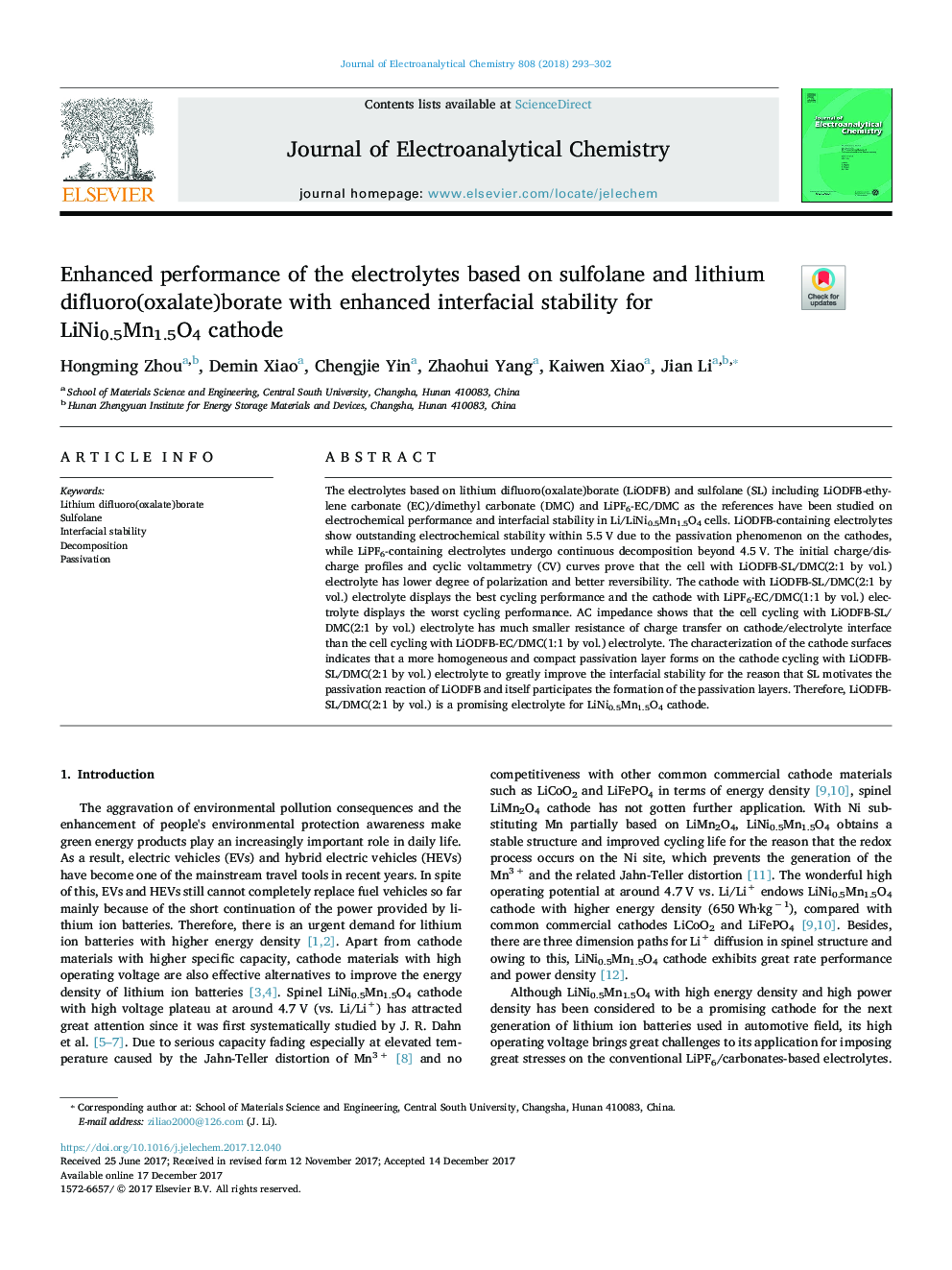| Article ID | Journal | Published Year | Pages | File Type |
|---|---|---|---|---|
| 6662277 | Journal of Electroanalytical Chemistry | 2018 | 10 Pages |
Abstract
The electrolytes based on lithium difluoro(oxalate)borate (LiODFB) and sulfolane (SL) including LiODFB-ethylene carbonate (EC)/dimethyl carbonate (DMC) and LiPF6-EC/DMC as the references have been studied on electrochemical performance and interfacial stability in Li/LiNi0.5Mn1.5O4 cells. LiODFB-containing electrolytes show outstanding electrochemical stability within 5.5Â V due to the passivation phenomenon on the cathodes, while LiPF6-containing electrolytes undergo continuous decomposition beyond 4.5Â V. The initial charge/discharge profiles and cyclic voltammetry (CV) curves prove that the cell with LiODFB-SL/DMC(2:1 by vol.) electrolyte has lower degree of polarization and better reversibility. The cathode with LiODFB-SL/DMC(2:1 by vol.) electrolyte displays the best cycling performance and the cathode with LiPF6-EC/DMC(1:1 by vol.) electrolyte displays the worst cycling performance. AC impedance shows that the cell cycling with LiODFB-SL/DMC(2:1 by vol.) electrolyte has much smaller resistance of charge transfer on cathode/electrolyte interface than the cell cycling with LiODFB-EC/DMC(1:1 by vol.) electrolyte. The characterization of the cathode surfaces indicates that a more homogeneous and compact passivation layer forms on the cathode cycling with LiODFB-SL/DMC(2:1 by vol.) electrolyte to greatly improve the interfacial stability for the reason that SL motivates the passivation reaction of LiODFB and itself participates the formation of the passivation layers. Therefore, LiODFB-SL/DMC(2:1 by vol.) is a promising electrolyte for LiNi0.5Mn1.5O4 cathode.
Related Topics
Physical Sciences and Engineering
Chemical Engineering
Chemical Engineering (General)
Authors
Hongming Zhou, Demin Xiao, Chengjie Yin, Zhaohui Yang, Kaiwen Xiao, Jian Li,
